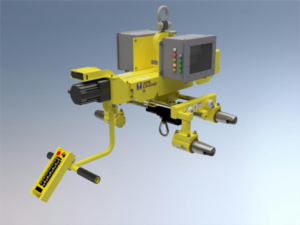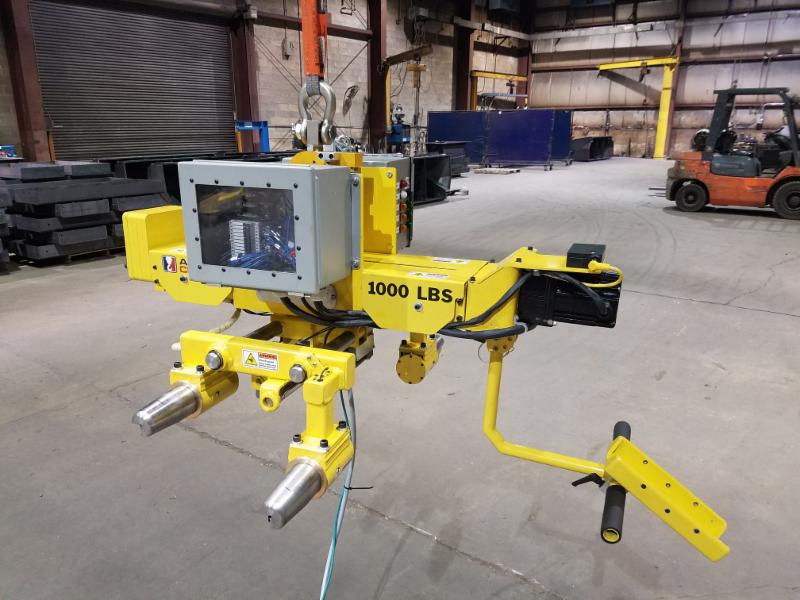Overview
AFE Crane was commissioned to design and fabricate a new load bar system for lifting plastic fuel tanks onto agricultural vehicles. The existing process required operators to manually exchange the load bar on the hoist for each of the three variations of fuel tanks. Additionally, operators had to latch and unlatch the load bar from the fuel tanks, leading to significant safety and ergonomic concerns.
Project Challenges
The primary challenges in this project included:
-
Varied Fuel Tank Designs: Each fuel tank had a unique center of gravity, necessitating a versatile lifting solution capable of adjusting to different balance points.
-
Manual Handling Risks: The existing manual process posed safety risks and ergonomic strain on operators, highlighting the need for automation to enhance safety and efficiency.
-
Safety Integration: Incorporating comprehensive safety measures into the new system was crucial to prevent accidents and ensure smooth operation.
The AFE Crane Solution
To address these challenges, AFE Crane engineered an innovative fuel tank load bar with the following features:
-
Electric Linear Actuators: Four spud pins, actuated by electric linear actuators, were designed to engage securely with the fuel tanks. These spud pins are equipped with sensors that halt operation if any resistance is detected, ensuring precise and safe engagement.
-
Comprehensive Sensor Network: Over 15 sensors feed data into a Programmable Logic Controller (PLC), monitoring various parameters to enhance operational safety and efficiency.
-
Adjustable Hook Point: An adjustable hooking mechanism, capable of shifting over 12 inches via a lead screw, allows the hook point to align directly above the center of gravity for each tank. This ensures the fuel tank remains level during lifting operations.
-
Indicator Lights: Visual indicators inform operators when the hook point is in the appropriate zone for loading, unloading, or lifting, facilitating correct and safe operation.
Project Execution
The development process involved several key steps:
-
Design and Prototyping: AFE Crane’s engineering team designed the load bar system, integrating the necessary actuators, sensors, and adjustable components. Prototypes were developed to test functionality and safety features.
-
Safety Programming: The PLC was meticulously programmed to manage inputs from all sensors, control motors, and interface with indicator lights. It was also configured to interrupt hoist, trolley, and bridge motions if unsafe conditions were detected.
-
Testing and Validation: Extensive testing ensured that the system operated as intended, with all safety mechanisms functioning correctly. Adjustments were made based on test results to optimize performance.
-
Operator Training: Comprehensive training sessions were conducted to familiarize operators with the new system, emphasizing safety protocols and efficient operation techniques.
Conclusion
The implementation of AFE Crane’s automated fuel tank load bar significantly improved the safety and ergonomics of the fuel tank lifting process. By reducing manual intervention and incorporating advanced safety features, the new system not only minimized the risk of operator injury but also enhanced overall efficiency in the assembly process. This project exemplifies AFE Crane’s commitment to delivering tailored solutions that address specific client challenges while prioritizing safety and operational excellence.

